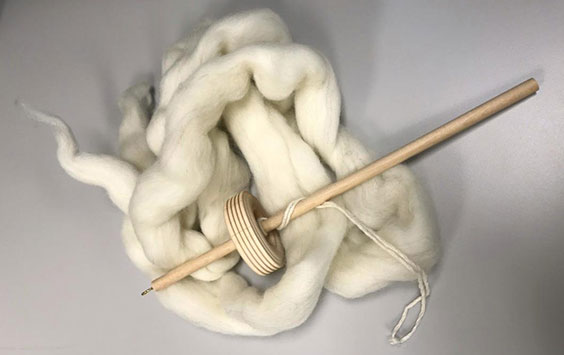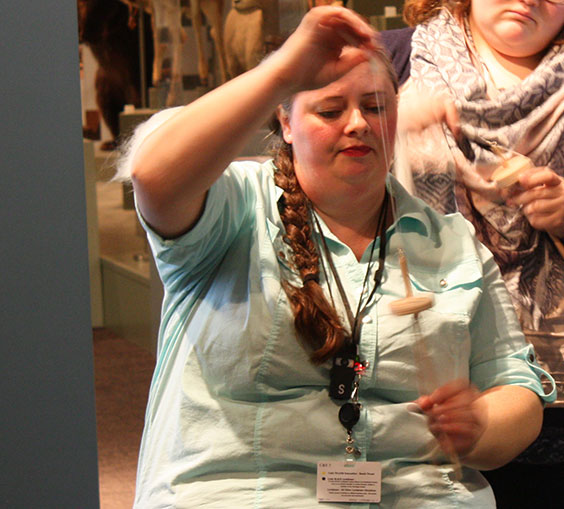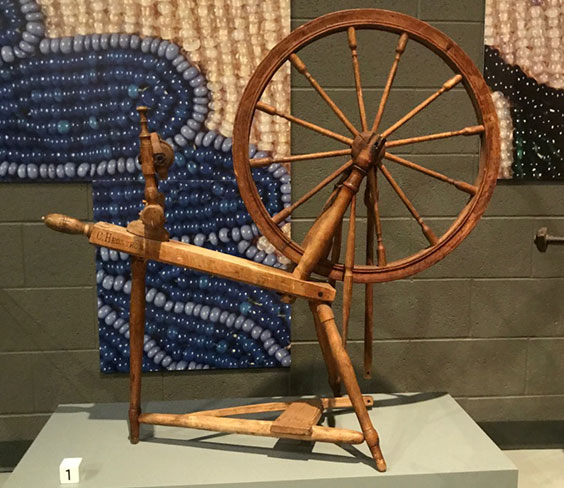My favorite type of museum program to give is a demonstration. Over the years, I have learned to do all kinds of different crafts and activities in order to show the general public how people of the past did their work. Demonstrations are a great way to pull people in and get them excited about history. You can have a relaxed and informal discussion about how people at a particular site, or in a particular time period, lived. How is butter made, and what is the science behind it? How do you make a quilt and piece together a complicated pattern? Embroidery; wood carving; leather stamping; making rope, soap, and candles? I can do some of these projects better than others. Over the years I’ve picked up things here and there, learned from mentors, learned from friends, and learned from colleagues at living history sites. One of my favorite resources is YouTube video tutorials.

The author's drop spindle and wool roving
The newest thing I’m learning to do is spin wool to yarn by using a drop spindle. We have several talented staff here who know a lot about spinning, and they have been very nice to share some of their knowledge and expertise with me. This is very exciting to me as a museum educator. I am planning some programs to demonstrate how we go from sheep to mitten, and all the steps in between. This provides us with endless opportunities to interact with our visitors and teach them long forgotten skills that were once more commonly part of everyday life. After we have the yarn we can weave it, knit it, or crochet it—turning it into functional art like blankets, sweaters, and holiday ornaments. As our staff brainstorms all the different types of programs we can start doing, it is easy for us to get carried away. However, it is really fun to talk about everything from shearing a sheep; cleaning, carding, and dyeing wool; spinning it into yarn; and figuring out which of those programs would work best in our available space.

The author demonstrating how to use a drop spindle.
I enjoy this process of learning how to do a new activity, and working at it until I can talk to other people about what I’m doing. Earlier this spring I sat in the Inspiration Gallery for about an hour practicing with a drop spindle. I am by no means an expert. In fact, I’m really not very good yet. However, I probably talked to about forty school children and several adults about what a drop spindle is; how it works; how it is related to a spinning wheel; and why people did (and still do) this kind of work. There are so many places to go to learn how to do projects like this. There are many books available about using drop spindles and spinning wheels. The internet is full of detailed video tutorials. This is probably my favorite part of working in a museum—learning how to do new things and showing other people what I’ve learned.

Spinning wheel on display at the North Dakota Heritage Center and State Museum

